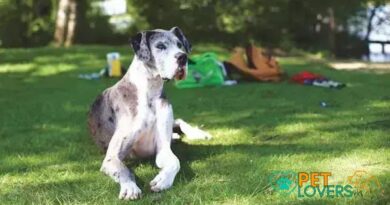What is Toilet training
What is Toilet Training?
Toilet training, often referred to as potty training, is the process of teaching a dog to eliminate waste in a designated area, rather than indoors. This essential training helps to establish good habits and promotes a clean living environment for both the pet and its owner. Understanding the fundamentals of toilet training is crucial for any dog owner, as it lays the groundwork for a harmonious relationship between humans and their canine companions.
The Importance of Toilet Training
Toilet training is vital for several reasons. Firstly, it helps to prevent accidents inside the home, which can lead to unpleasant odors and potential damage to flooring and furniture. Secondly, a well-trained dog is more likely to be welcomed in public spaces, such as parks and cafes, where good behavior is expected. Lastly, toilet training fosters a sense of security and routine for the dog, making them feel more comfortable in their environment.
When to Start Toilet Training
Most experts recommend starting toilet training as soon as you bring your new puppy home, typically around 8 weeks of age. At this stage, puppies are learning about their surroundings and are more receptive to training. However, older dogs can also be trained, although the process may take longer. It’s essential to be patient and consistent, regardless of the dog’s age, to achieve successful results.
Choosing the Right Location
When toilet training your dog, selecting the right location for elimination is crucial. Ideally, this area should be easily accessible and away from high-traffic zones in your home. For outdoor training, choose a specific spot in your yard where your dog can consistently go. If you’re using indoor pads, place them in a quiet area where your dog feels comfortable. Consistency in location helps your dog associate that spot with bathroom breaks.
Establishing a Routine
Establishing a consistent routine is key to successful toilet training. Take your dog outside or to the designated area at regular intervals, such as after meals, playtime, and naps. Puppies have small bladders and may need to go out every hour or so. By creating a schedule, your dog will learn when it’s time to eliminate, reducing the likelihood of accidents indoors.
Positive Reinforcement Techniques
Using positive reinforcement is one of the most effective methods for toilet training. When your dog eliminates in the correct spot, immediately reward them with praise, treats, or playtime. This positive association encourages your dog to repeat the behavior. Avoid punishment for accidents, as this can create fear and anxiety, making the training process more challenging.
Recognizing Signs of Need
Being able to recognize the signs that your dog needs to go outside is essential for successful toilet training. Common signs include sniffing around, circling, whining, or heading towards the door. By paying attention to these cues, you can take your dog out promptly, reinforcing the idea that they should eliminate in the designated area.
Dealing with Accidents
Accidents are a normal part of the toilet training process, and it’s important to handle them calmly. If you catch your dog in the act, gently interrupt them and take them outside to the designated area. If an accident occurs indoors, clean it up thoroughly to eliminate any lingering odors that might encourage your dog to return to that spot. Use enzymatic cleaners specifically designed for pet messes to ensure complete removal of scents.
Common Challenges in Toilet Training
Toilet training can come with its share of challenges. Some dogs may be stubborn or resistant to training, while others may have medical issues that affect their ability to hold their bladder. If you encounter persistent difficulties, consider consulting a veterinarian or a professional dog trainer for guidance. They can help identify any underlying issues and provide tailored strategies for your dog’s specific needs.
Maintaining Long-Term Success
Once your dog is successfully toilet trained, it’s essential to maintain their good habits. Continue to take them out regularly and reward them for appropriate elimination. Be mindful of any changes in routine, such as moving to a new home or changes in the household, as these can affect your dog’s behavior. Consistency and ongoing positive reinforcement will help ensure that your dog remains well-trained for years to come.



